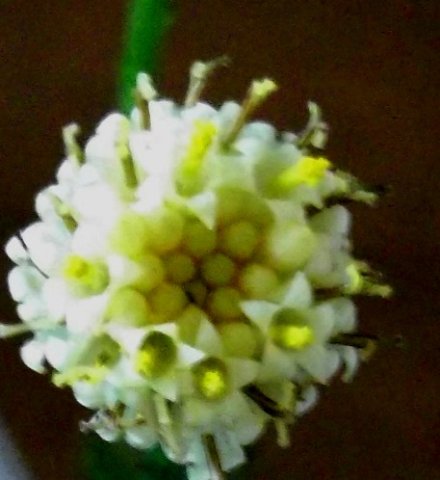Senecio triqueter

Senecio triqueter is a sparsely branched shrublet reaching heights from 15 cm to 30 cm. The willowy, erect branches are longitudinally ridged; most branching occurring near the base.
The narrow to needle-like, somewhat terete or cylindrical, dark green leaves ascend, sometimes densely around the stems. They are from 8 mm to 15 mm long and straight. Leaf stalks are short, the leaf tips sharply pointed. A faint covering of whitish velvety hairs is found on leaves and upper stems, a pungent scent exuded.
The flowerheads grow solitary at stem-tips, consisting of pale yellow to creamy disc florets; there are no ray florets. The involucre comprises two rows of narrow, greenish bracts that are acutely pointed and often purple-tipped, particularly the inner ones. The inner row of bracts form a tall, complete cup; the outer ones are shorter, of uneven length with gaps between them.
In picture some florets are open, spreading their five pointed white petals, while the still to open buds in the centre are globular and dully cream coloured. The stamens of the inner, recently opened florets are yellow, cohering erectly from the floret centre, those of older florets near the perimeter of the disc darkly discoloured to almost black. Flowering happens from summer to winter, depending on the region.
The species is endemic to a small coastal part of the Western Cape, distributed from the eastern slopes of southerly Cape Peninsula mountains, Caledon and Bredasdorp to Stilbaai.
The habitat is sandstone or limestone slopes and flats among fynbos. The plant is not considered to be threatened in its habitat early in the twenty first century (Privett and Lutzeyer, 2010; Kidd, 1983; http://fernkloof.org.za; http://redlist.sanbi.org).

